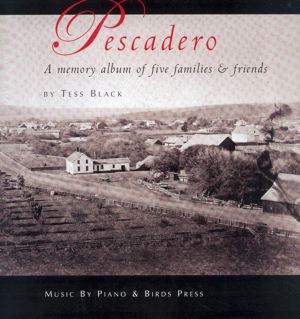Old-New story by June Morrall
Early 1900s: The Way School Used to be
In the summer of 1905, the sweet fragrance of fresh garden-grown roses hung in the air. Masses of the freshly cut blooms covered the stage of the crowded OddFellows Hall on Main Street in Half Moon Bay.
The reason she got the job was because “they hadn’t had a new teacher in Pescadero for 40 years.Mrs.Pinkham was old and she quit. That’s how I got the job.”
The mood was celebratory, and the room filled with well-wishers for popular schoolteacher Rose Meehan’s “farewell reception.”
The “goodbyes” did not come easily for the well-liked teacher who had accepted the exciting new assignment as vice principal at a San Mateo school. Rose Meehan was getting a promotion and a new challenge “over the hill.”
Her teaching career began in a two-room Princeton school in 1887. Students from Pedro Point (in present-day Pacifica) all the way south to Miramar attended the school located on the present-day site of “Barbara’s Fishtrap. Seafood Restaurant”.
[How the children got from Pedro Point and across Devil’s Slide to Princeton, I do not know.]
It didn’t take long for trouble to break out at the Princeton schoolhouse. Rose Meehan’s teaching assignment was cut short when a “territorial fight” broke out. The struggle was over location of the school. The heated controversy was resolved when a family with seven children moved to Moss Beach, thereby tipping the scale, and sending Rose to open the new school at the corner of Etheldore Street and the main road in Moss Beach.
A few years later what was called the Montara School was moved to beautiful Sunshine Valley, according to a monograph I found at the San Mateo County History Center today housed in the historic Redwood City Courthouse (but when I did my research the museum stood on the campus of the College of San Mateo.)
One of Rose’s famous pupils, whose written lessons revealed graceful handwriting, was Peter Kyne, who matured into a popular author. Some of his later novels were made into movies. One of the films was called “The Three Godfathers” (1948), a “wild west” flick directed by John Ford and starring John Wayne.
The celebration honoring Rose Meehan at the OddFellows Hall lasted one hour. Father Sullivan, on behalf of the grateful community, presented Rose with a gold rosary encrusted with amethyst beads. When the presentation was over, the guests danced until midnight to the music of a small orchestra.
Anxious to begin work as Rose Meehan’s replacement, was the young and equally-liked Elizabeth (Lizzie Wienke), the only child of Mr. and Mrs. J.F. Wienke, owners of the beach resort called the Moss Beach Hotel.
Although Lizzie only taught for four years on the Coastside, she quickly won the allegiance of pupils and their parents. In 1906, the year of the famous San Francisco earthquake and fire, Lizzie Wienke came in first in a newspaper contest as the coiunty’s most popular teacher. The prize was a lot in the San Mateo area.
Lizzie’s life changed after the sudden death of her husband, Joe Nash.(I think Joe was the County Clerk, and Lizzie replaced him.) Through coincidences, fate, and an office next door to the Counsty Surveyor George Kneese, romance blossomed and Lizzie wed George. Now as Mrs. Kneese, was reputed to be a powerful San Mateo County Clerk.
Due to the Ocean Shore Railroad, and the accompanying sales of building lots, the population grew after Lizzie Wienke left the Coastside in 1910. To accommodate more children, school district trustees ordered that the one-story Moss Beach school be built, a school that was torn down in the 1990s.
Then came Harr Wagner, a developer who bought one square mile of land in Montara. Wagner was an educator, author and the editor of the “Western Journal of Education, ” a publication favoring higher salaries for teachers.
In 1915, a two-story was built in Montara in the Mission Revival style at the corner of Sixth and Le Conte Streets.
Three years later, Wagner wrote a slim school textbook which included a chapter on the Spanish explorers and a photo of the monument dedicated to the famous explorer Gaspar de Portola that still stands (?) on Montara Mountain.
Honored at the Sequoia Club in San Francisco, shortly before his death in the late 1930s, Harr Wagner was applauded for “bringing to light material of an educational and literary nature that would otherwise have remained undiscovered.”
Prior to 1900, it was common practice for landowners to establish schoolhouses especially if the population was too small to warrant an official school district.
That was true in early Half Moon Bay. Tiburcio Vasquez, the founder of Spanishtown, hired a series of tutors—some very bright but with checkered backgrounds–to teach his son and other children in a shed converted into a classroom.
Judge John Pitcher, re-elected as justice of the peace until well into his 90s, lived with his family at remote Tunitas Creek in the 1860a. He wanted to hire his own teachers and build a school on his property to protect his children from grizzly bears and unsavory human influences as well.
“…the late coming home of our children from the Purissima school on evenings filled us with fears,” Judge Pitcher told a reporter in 1918. “I visited the school one morning and found it in charge of a big man with little nerve. He held that the boys were rough and slow, and the classes had to be kept late after school to accomplish anything at al. I urged that he make them do the work during regular hours but he claimed it would be worth his life to do so. This was evident as he called his pupils in, for one boy had a pistol in his bootleg, his brother had a knife protruding from his boot, and I recognized both as the sons of a convicted gunman.”
Frank Bell, a landowner, who resided near San Gregorio, also opened a school on his property.
In 1875 the on-room Seaside School was built in San Gregorio On Sundays it doubled as a place for church services. A typical example of a 19th century rural American school, the Seaside School sands stands on Stage Road.
School sessions in the agricultural districts were determined by the crop seasons as entire Coastside families worked on farms.
Long after leaving school, students remembered their most influential teachers. One teacher who left an impression was Belle Vallejo, whose family settled in Half Moon Bay in the 1860s. She became famous for riding her pony to the Higgins School on Higgins Canyon Road.
Katherine Valentine, the granddaughter of Judge John Pitcher, together with Belle Vallejo, taught at the Half Moon Bay Grammar School on Church Street, Half Moon Bay, a building removed in 1940. A second-grade teacher at the time, Miss Vallejo was nearing retirement.
“Belle was a kind, sweet woman who saw good in every child,” Katherine Valentine told me in 1992.
Katherine attended the Tunis School at Tunitas Creek, went to Half Moon Bay High School on Kelly Avenue, and graduated from San Jose Teacher’s College in San Jose. In 1929, during the beginning of the Great Depression, she landed her first job at Pescadero Grammar School, earning $100 a month, considered a rich person’s salary during these tough times.
During the eight years she taught at Pescadero, Katherine said she “was watched like a hawk. They were afraid I would marry and then I would lose my job. I didn’t know any married teachers.”
In 1937 Katherine Valentine moved to Half Moon Bay and began teaching at Half Moon Bay Grammar School.
“We didn’t have books all the time so I bought workbooks for my students. It was a state law that I had to teach manners and morals. We taught the children to say ‘please’ and ‘thank you’ and not to talk with their mouths full.”
Katherine Valentine , who, when she wasn’t teaching was an “enemy airplane watcher” at a beach south of Half Moon Bay during WWII. She wed in 1942, and by then it was acceptable, continuing to teach for another twenty-plus years.
Some of the students she recalled with affection were Fred Cunha, a retired colonel; Barry Cerevha, a neurosurgeon, and Tim McGray, a physician.
One hundred years ago the Coastside was an isolated farming community with a sparse population. Teachers exerted great influence and were highly respected for the lessons they taught in a community of one and two-room schoolhouses.
——
A new-old story by June Morrall
——more coming———-






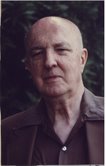
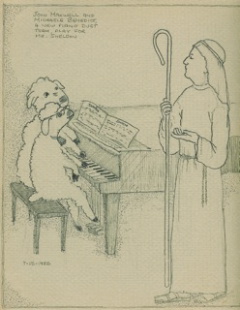
 Katie’s Day
Katie’s Day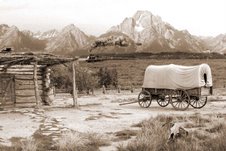
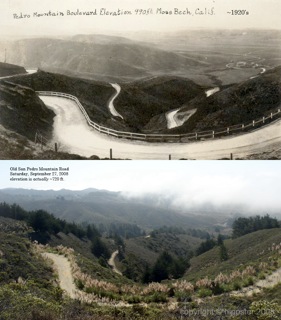
 Story by John Vonderlin
Story by John Vonderlin